Log in
Statistics
We have 477 registered usersThe newest registered user is гераскинс
Our users have posted a total of 48009 messages in 7050 subjects
THAT’S ENTERTAINMENT
CLICK ON ANY OF THESE LINKS TO FIND OUR EXTREME ENTERTAINMENT
UPDATED :
71 WGT TUTORIALS & 32 YOUNG46 TUTORIALS
CLICK HERE TO SEE OVER 100 YOUTUBE VIDEO TUTORIALS . FROM WGTers , WGT & YOUNG46 FORUM UPDATE
TO THE MANY WELCOME GUESTS . THIS FORUM IS NO LONGER A COUNTRY CLUB WEBSITE FOR A WGT COUNTRY CLUB . PLEASE FEEL FREE TO READ THE FORUMS.
THERE ARE MANY TOPICS OF INTEREST . OR NOT . THIS WEBSITE IS AN INFORMATION AND ENTERTAINMENT WEBSITE ONLY .
MUCH OF THE CONTENT IS ARCHIVES OF PURPOSES PAST .
THERE ARE SOME MORE CURRENT TOPICS .
REGISTRATION IS NOT NECESSARY TO READ THROUGHOUT .
REGISTRATION IS EASY AND FREE . THIS IS AN AD FREE WEBSITE . NOTHING IS EVER REQUESTED FROM REGISTERED MEMBERS .
REGISTRATION ENABLES COMMENTING ON TOPICS . POSTING NEW TOPICS . FULL ACCESS TO THE WEBSITE IMAGE HOST . WHICH IS A VERY COMPLETE AND CONVENIENT TOOL .
PLEASE ENJOY .
TIER & AVERAGE REQUIREMENTS
BASIC LEVEL AND AVERAGE REQUIREMENTS , AND SATURATION

WHILE YOUR HERE
WHILE YOUR HERE :
CHECK OUT THE INCREDIBLE PHOTOGRAPHY IN
MY SERIES
THIS USED TO BE THE HOME OF OUR WORLD CLOCK . WHICH CAN NOW BE FOUND IN ITS OWN FORUM ON THE MAIN PAGE ..
THERE ARE MORE WORLD CLOCKS INSIDE HERE .
WORLD CLOCK
FB Like
HISTORY FACTS * 6 marvels of engineering *
Page 1 of 1
 HISTORY FACTS * 6 marvels of engineering *
HISTORY FACTS * 6 marvels of engineering *

History’s Most Ingenious Engineering Marvels
Our planet is home to many talented engineers. Termites, for example, build complex structures that rise up to 10 feet in height, their “bricks” bonded by bio-cementation. Spiders, meanwhile, weave intricate webs, which, like suspension bridges, are capable of bearing heavy loads in even the stormiest weather. Then there are beavers and their well-engineered dams, bees and their cellular hives, and industrious ants whose largest recorded contiguous colony stretches a truly incredible 3,700 miles.
Humans, of course, are in a league of their own when it comes to construction. For millennia, we have been building structures of awesome size and complexity: roads and bridges, cathedrals and stadiums, tunnels and skyscrapers. Among the innumerable structures built by humankind, some stand out for their sheer size and magnificence. Here are six of the greatest engineering marvels in history.
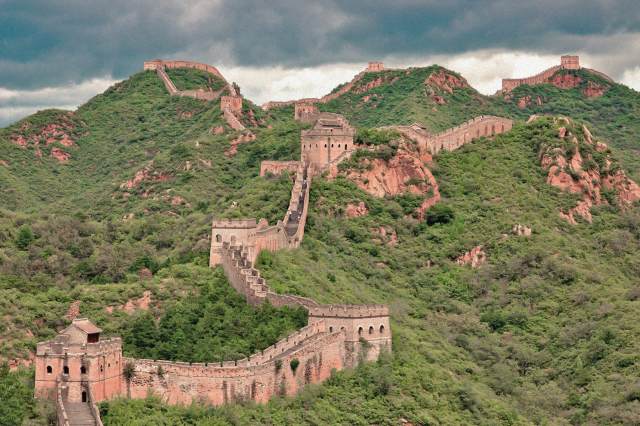
Photo credit: William Olivieri/ Unsplash
CAN YOU BELIEVE IT SAYS HERE THAT IT TOOK 2,000 YEARS TO BUILD THE GREAT WALL . WOW !
The Great Wall of China
The Great Wall of China is widely considered one of the greatest engineering feats of all time. Built continuously from the third century BCE to the 17th century CE, this series of walls and natural barriers stretches for around 13,000 miles. (Still, despite a persistent myth, it is not visible from the moon or space, at least not with the naked eye.) The Great Wall was originally the idea of Emperor Qin Shi Huang, the founder of the Qin dynasty and the first emperor of a unified China, who wished to protect the country from barbarian attacks from the north.
Under his orders, many older, unconnected state walls and fortifications were removed and a number of existing walls were joined into a single system stretching from the eastern Hebei province to Gansu province in the west. The wall itself was 15 to 30 feet high, topped with ramparts of at least 12 feet, with guard towers distributed at regular intervals. Much of the Great Wall that we now see was constructed during the powerful Ming dynasty, starting from around 1474. Today, the most famous and iconic section of the Great Wall of China is located 43 miles northwest of Beijing. This section was rebuilt in the late 1950s and now attracts thousands of tourists every day.
Related:5 Inventions That Came Out of the Great Depression
Advertisement
You may also like
- Revealing Facts About 5 Celebrated Painters
- 5 Facts About England’s Elizabethan Era
- Unforgettable Moments in Baseball History
Advertisement

Photo credit: Zayn Shah/ Unsplash
Hagia Sophia
The awe-inspiring Hagia Sophia was built under Byzantine Emperor Justinian I between 532 and 537 CE — a remarkably quick construction considering the size of the project. With its vast central basilica, complex system of vaults and semi-domes, and high central dome spanning more than 101 feet in diameter, it was the world’s largest cathedral for nearly a thousand years (until the completion of Seville Cathedral in 1520). Considered one of the greatest examples of Byzantine architecture, Hagia Sophia represents the region’s shifting political and religious affiliations. Built as a Christian church, in later centuries it became a mosque, a museum, and a mosque once again. These changes are reflected in the building’s design, which features minarets and inscriptions from Islam as well as extravagant Christian mosaics. Hagia Sophia was the inspiration for many other Ottoman mosques, and has long been considered a unique architectural masterpiece.
Advertisement
Advertisement
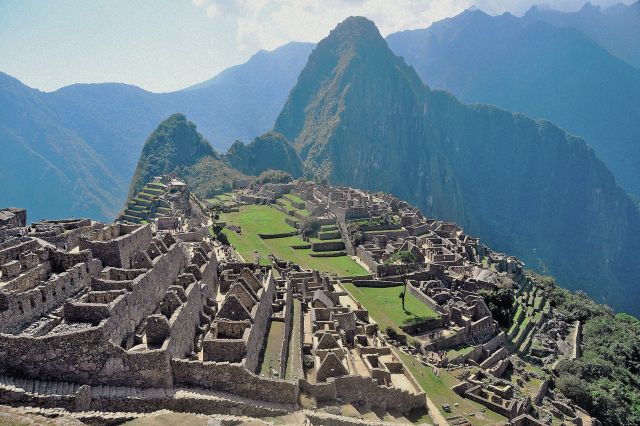
Photo credit: Victor He/ Unsplash
Machu Picchu
Perched high above the Urubamba River valley in a narrow saddle between two mountain peaks, with tropical cloud forests tumbling down below, Machu Picchu is simply mind-blowing. It’s hard not to look around and think, “How the heck did they build this here?” The site is situated at an elevation of 7,710 feet, and contains about 200 structures spread across zones dedicated to religious, ceremonial, astronomical, and agricultural activities, all surrounded by incredible farming terraces, connected by some 3,000 stone steps. Many mysteries still surround the construction and precise purpose of Machu Picchu. Historians estimate that it was built around 1450 CE and abandoned around 100 years later with the arrival of the Spanish conquistadors. The conquistadors never found Machu Picchu, and it stood for centuries known only to the peasant farmers who lived in the immediate area. It wasn’t until 1911, when American academic and explorer Hiram Bingham rediscovered the site, that the remarkable citadel was brought to the world’s attention.
Related:5 Inventions That Came Out of the Great Depression
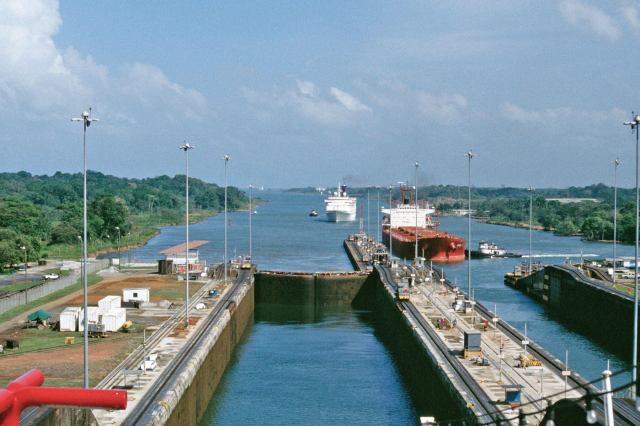
Photo credit: NNehring/ iStock
The Panama Canal
The idea of building a waterway across the isthmus of Panama to link the Atlantic and Pacific oceans dates back to at least the 1500s, when Spanish explorer Vasco Núñez de Balboa realized that the two oceans were separated by a 50-mile stretch of land. It wasn’t until 1880, however, that excavations for a canal first began, led by France. Unfortunately, the original nine-year project was devastated by malaria, yellow fever, and other tropical diseases, and ended with bankruptcy and the loss of some 20,000 lives. In 1904, the United States began the project anew. A major sanitation effort was put in place to help minimize disease, and the entire infrastructure was modernized.
Perhaps most importantly, the project’s chief engineer, John Stevens, convinced President Theodore Roosevelt that the concept of the waterway must be changed from a sea level canal to a lock canal. The original locks (the system has since been expanded), each measuring 110 feet wide by 1,000 feet long, made it possible to lift ships 85 feet above sea level to the artificial Gatún Lake, and then back down to the sea. This incredible feat of engineering radically altered maritime travel and trade. By using the canal to cut across the isthmus, ships could avoid the lengthy trip around Cape Horn in South America, shortening sea voyages by about 8,000 nautical miles.
Advertisement
Advertisement
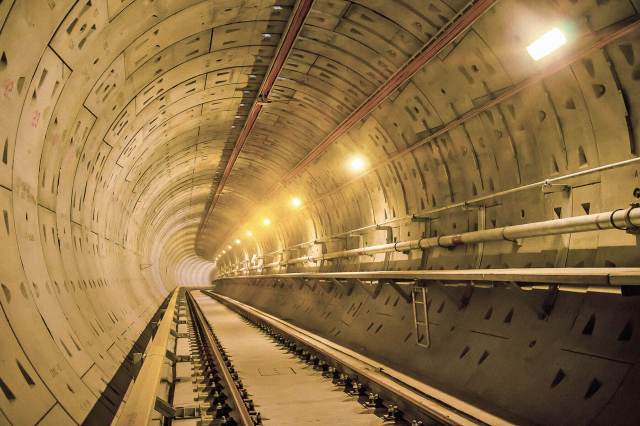
Photo credit: Stor24/ Shutterstock
The Channel Tunnel
After six years of construction, the Channel Tunnel opened in May 1994, becoming the only fixed link between the island of Great Britain and the European mainland. The idea of building a tunnel between England and France was not new. French engineer Albert Mathieu had proposed such a project in 1802, his design featuring an artificial island halfway across for changing horses. Back then, the idea simply wasn’t technologically feasible, but by the 1980s, the tunnel project was given the green light. Digging began on both sides of the Channel, and the initial connection was completed in 1991. Three years later, the 31.5-mile tunnel was opened. It actually consists of three tunnels: two for rail traffic and a central tunnel for services and security. The tunnel descends to a depth of 246 feet below the sea bed. It is the third-longest railway tunnel in the world, and with 23.5 miles running under the English Channel, the world's longest undersea tunnel.
Related:5 Inventions That Came Out of the Great Depression
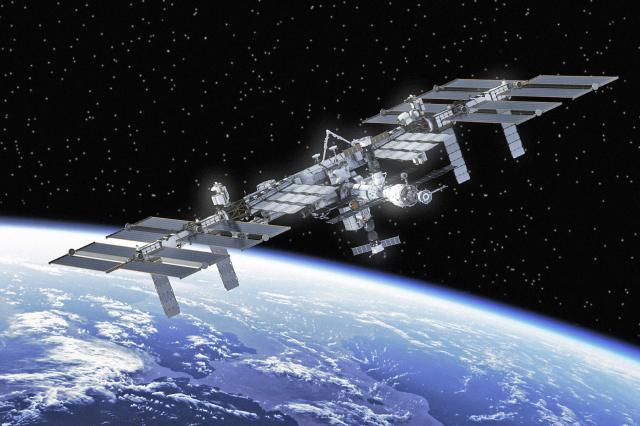
Photo credit: 3DSculptor/ iStock
The International Space Station
Built between 1998 and 2011, the International Space Station (ISS) is the largest single structure humans ever put into space. It also represents arguably the greatest multinational collaborative construction project in history, involving Europe, the United States, Russia, Canada, and Japan. Elements of the station were built in multiple countries beginning in the late 1980s. In 1998, Russia’s Zarya control module and the U.S.-built Unity connecting node were launched into orbit, where they were connected by American space shuttle astronauts. In 2000, following the installation of the Russian-built habitat module Zvezda, the ISS received its first resident crew. Since then, it has been continuously occupied. Altogether, the space station is larger than a football field and weighs almost 450 tons. Maintaining an orbit with an average altitude of 250 miles, it circles the Earth in about 93 minutes, completing 15.5 orbits per day. The ISS is a truly unique engineering masterpiece, and its sophisticated science laboratory allows us to carry out research that is simply not possible on Earth — paving the way for future missions to Mars and beyond.
 Similar topics
Similar topics» HISTORY FACTS * The most famous typos in history *
» HISTORY FACTS * The best history movies from 2023 *
» HISTORY FACTS * The loudest sound in history *
» HISTORY FACTS * History's most famous pets *
» HISTORY FACTS *How long was history's shortest war? *
» HISTORY FACTS * The best history movies from 2023 *
» HISTORY FACTS * The loudest sound in history *
» HISTORY FACTS * History's most famous pets *
» HISTORY FACTS *How long was history's shortest war? *
Page 1 of 1
Permissions in this forum:
You cannot reply to topics in this forum
 Events
Events















































































» INTRO TO WORD SMARTS
» PINTEREST ICONIC COMIX
» HISTORY FACTS * Gold wasn't always the top Olympic medal *
» Word Genius Word of the day * occlude *
» JULY NATIONAL CELEBRATION DAYS JULY 26 2024
» QUIZ TREAT QUIZ *Which mammal has the most powerful bite? *
» QUIZ TREAT ANSWER PAGE
» NAT GEO * The 2024 Olympics will likely be the hottest ever *
» NAT GEO * Sharks found with cocaine in their systems *
» WISE TRIVIA QUIZ *What was the first song ever played on the radio? *
» WISE TRIVIA ANSWER PAGE
» E.S.Etaski * Sister Seekers Book 10 now available everywhere! *
» WORD DAILY Word of the Day: * literatim *
» JULY NATIONAL CELEBRATION DAYS JULY 25 2024